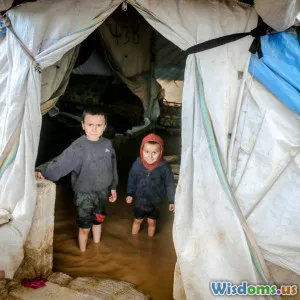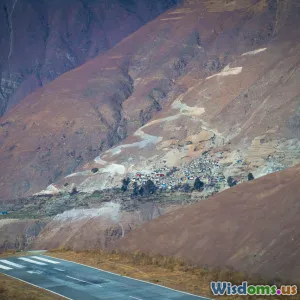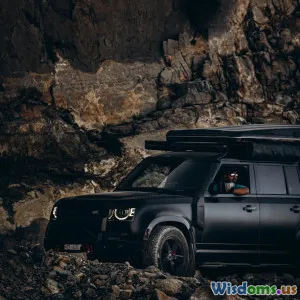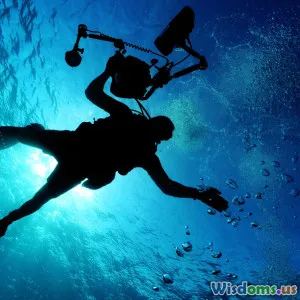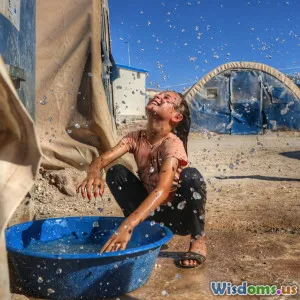
From Trekking to Typhoon Relief: Adventures That Save Lives in the Pacific
8 min read Explore how thrilling Pacific adventures like trekking and typhoon relief missions merge excitement with lifesaving impact. (0 Reviews)
From Trekking to Typhoon Relief: Adventures That Save Lives in the Pacific
The Pacific region, stretching from the vibrant islands of Fiji to the rugged mountains of Papua New Guinea, is renowned for its stunning natural beauty and cultural richness. But beneath this paradise lies a story of resilience and altruism, where adventure meets humanitarianism. In this vast oceanic expanse, individuals and groups transform thrilling pursuits like trekking, diving, and sailing into powerful tools for saving lives, especially in the face of frequent natural disasters such as typhoons. This article ventures into these unique engagements where excitement fuels empathy, exploring how unforgettable adventures directly contribute to critical relief operations and community resilience.
The Pacific's Dual Identity: A Land of Adventure and Vulnerability
The Pacific Ocean's islands offer some of the world's most challenging and scenic trekking routes, from Fiji's lush rainforests to Vanuatu's active volcano trails. These adventures attract thousands annually, motivated by the lure of pristine landscapes and cultural immersion. However, the region is also one of the most disaster-prone globally, grappling with typhoons, earthquakes, and rising sea levels.
For example, the Solomon Islands and the Philippines—regions beloved by trekkers—commonly face strong typhoons that can devastate communities. According to the Asia-Pacific Economic Cooperation (APEC), natural disasters cost these islands billions annually, making relief efforts essential for survival and recovery.
The inherent vulnerabilities spark a remarkable blend of adventure and altruism: volunteers and adventurers become first responders, delivering aid, rebuilding infrastructure, and providing essential services after disasters strike.
Trekking Expeditions as Lifelines: Beyond Mere Recreation
Adventure Tourism with a Purpose
Trekking enthusiasts in the Pacific are increasingly drawn to journeys that integrate conservation and community support. Organizations like the Coral Triangle Treks in Papua New Guinea curate expeditions where part of the proceeds funds local healthcare and education.
Additionally, some expeditions include volunteers who assist local health clinics or train in emergency medical response during their stay. For instance, in Fiji’s remote interior, trekkers have been involved in mapping difficult trails that double as critical supply routes during floods or typhoon aftermaths. This practical knowledge has reduced relief response times substantially.
Building Resilience through Trail Mapping and Communication
A group from New Zealand’s Adventure Aid Collective embarked on a multi-island trek in 2019, focused on establishing GPS-monitored trails. Their objective extended to facilitating quicker dispatch of emergency teams and aid. By equipping local communities with satellite phones and basic first aid training during these treks, adventurers reinforce disaster readiness while engaging with the environment attentively.
When Adventure Meets Crisis: Typhoon Relief Efforts
Volunteer Mobilization and Rapid Response
Typhoons such as Yagi in 2018 and Goni in 2020 left massive destruction in parts of the Philippines and Micronesia. In the wake, many adventurers swiftly pivoted from recreation to rescue. Expedition groups stranded by storms organized community clean-ups, provided wooden materials to repair homes, and assisted with distributing clean water.
In some cases, adventurous sailors and kayakers became crucial in navigating flooded terrains to reach isolated communities that conventional vehicles could not access. Their intimate knowledge of the islands’ geography turned their skills into assets for lifesaving missions.
Technological Innovation on the Frontlines
Beyond physical aid, recent years have seen the deployment of drones in typhoon aftermaths, carrying medical supplies or performing damage assessments. Groups like Pacific Aid Adventures coordinate drone flights combined with trekking teams, offering unparalleled situational awareness and accelerating humanitarian aid distribution.
Real-World Impact: Stories of Lives Changed
The Vanuatu Recovery Trek
After Cyclone Harold devastated Vanuatu in 2020, a coalition of trekkers, aid workers, and local guides organized a month-long expedition titled "Steps for Shelter." Each step symbolically represented progress in rebuilding damaged shelters. Funds raised through donations and merchandise directly aided hundreds of families, while volunteer trekkers helped reconstruct community centers.
As one participant explained, "The trek connected us not only to the incredible landscape but to the resilience and hope of the people who call these islands home. It showed how adventure can serve a greater purpose."
The Philippines Island-Hopping Relief Fund
In 2019, a group combining adventurers with medical personnel executed an island-hopping mission delivering vaccines to children cut off by landslides and flooding. Using kayaks and small boats as their primary transportation, they traversed dangerous waters and forests, overcoming logistical challenges. Their dedication ensured that over 500 children received immunizations during epidemics, showcasing the critical role of adventurous humanitarian missions.
How You Can Participate and Support
Combining Travel With Impact
If the notion of adventurous travel with humanitarian purpose inspires you, look for organizations emphasizing sustainable and relief-oriented expeditions. Research groups that partner with local communities and contribute part of their revenue to aid programs.
Skills to Acquire
For those eager to make a direct impact, emergency first aid, wilderness survival, and basic logistics become indispensable skills in disaster-impacted regions. Participating in workshops and certifications before heading to the Pacific can prepare you to be an effective helper when assistance is needed most.
Conclusion: Adventure as a Catalyst for Compassion and Change
The stories emerging from the Pacific intertwine breathtaking adventures with profound human service, where every hike, paddle, and sail could simultaneously mean a new chance at recovery for communities battling nature's harshest blows. "From Trekking to Typhoon Relief" epitomizes how action-driven adventurers are shifting the narrative—not only seeking thrills but becoming vital lifelines for thousands.
This approach enriches the travel experience, deepens cultural connections, and most importantly, saves lives. The Pacific's call is clear: beneath its surface lies a world where courage blends with care, and exploration turns into a rescue mission. Imagine your next adventure not just as a journey of discovery but as a beacon of hope in a vulnerable paradise.
References:
- Asia-Pacific Economic Cooperation (APEC). "Disaster Risk Reduction in the Pacific."
- 'Cyclone Harold Recovery: Vanuatu Community Stories', Pacific Humanitarian Team, 2020.
- Adventure Aid Collective Reports, 2019-2021.
- Pacific Aid Adventures case studies on drone delivery missions.
Rate the Post
User Reviews
Popular Posts












